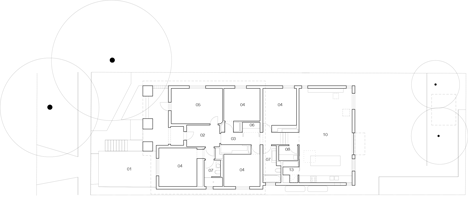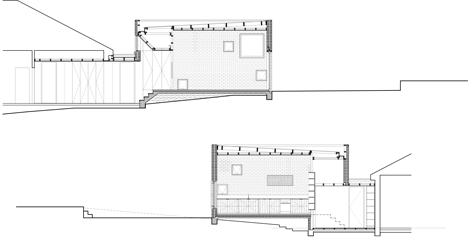Tribe Studio adds contemporary brick extension to a 1920s Sydney bungalow
Square windows and a matching door puncture the dark brick facade of this extension to a 1920s house in a Sydney suburb, designed by local office Tribe Studio (+ slideshow).
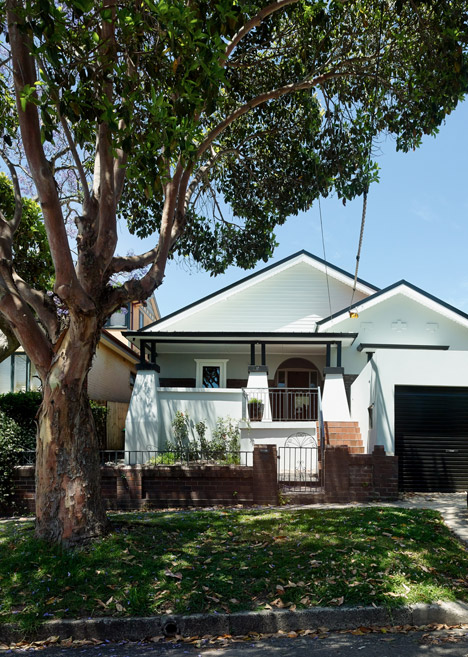
House Boone Murray is located on a typical street in the Australian city's North Randwick neighbourhood, where many of the properties are protected by heritage status. Tribe Studio was asked to update the bungalow to meet the needs of a young family.
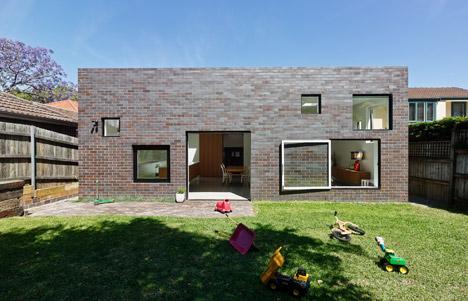
Instead of extending the building vertically, the architects removed an existing 1970s extension at the rear and replaced it with a modern addition that contains the main living spaces and improves the connection with the garden.
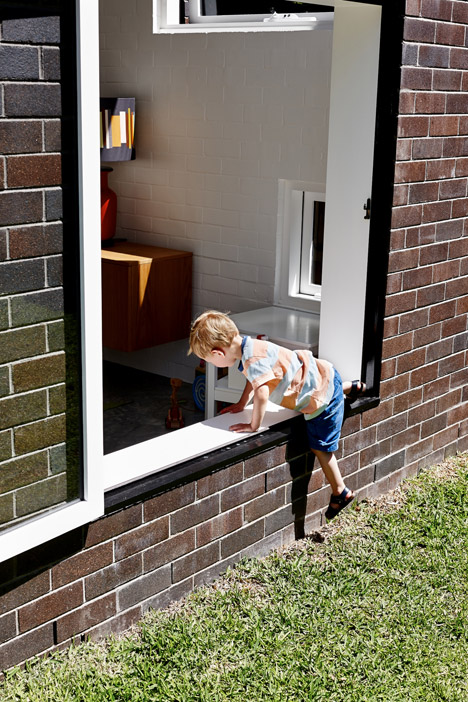
"While many of the surrounding bungalows have been added to with a second storey, this project respects the original single-storey nature of the streetscape and the neighbourliness that single-storey projects protect," explained the architects, whose past work includes a house where bikes are stored on a pulley system.
"In a town-planning sense it is a modest addition, largely invisible from the public domain. Nevertheless, it is robust and unapologetic about its newness."
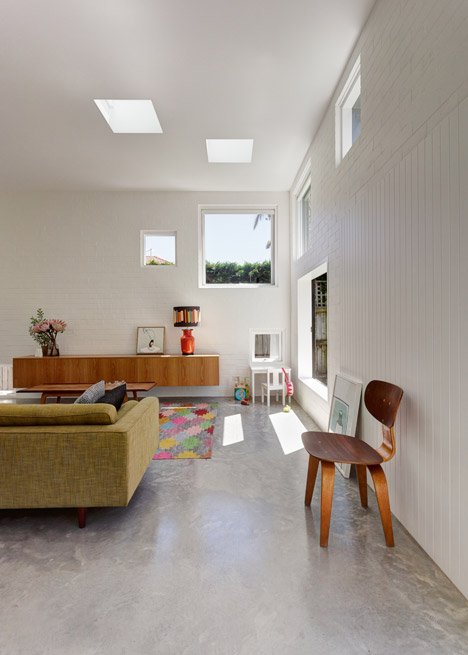
The building's street-facing elevation is rendered and decorated with timber details, corbels and fretwork, but its side walls are finished in simple face brickwork.
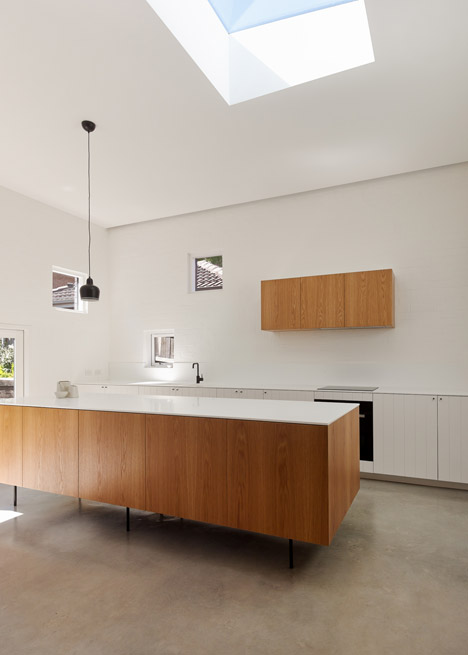
This informed the decision to extend this basic material treatment onto the external surfaces of the new addition, which provides a modern expression of the familiar Australian "box on the back" extension.
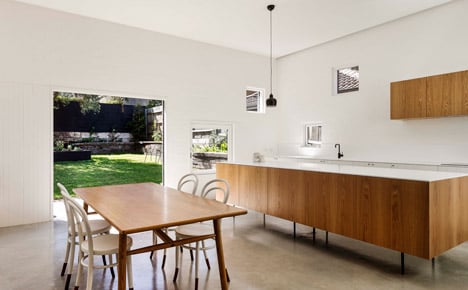
"We took this diminution of detail to its perverse extreme in the scheme, presenting a completely flat elevation to the garden," the project team explained. "The box on the back grows out of the existing house and reinforces the original house's logic in a thoroughly contemporary way."
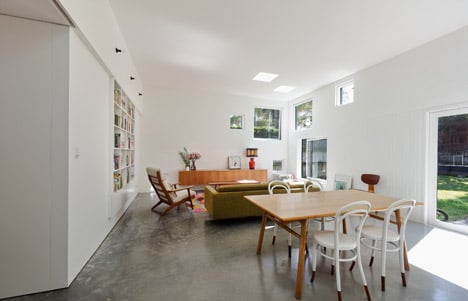
The extension accommodates a new bedroom, bathroom and laundry room at the rear of the building. A central hallway leading through the house culminates in a short set of steps up to the open-plan kitchen, dining and living area that looks out onto the garden.
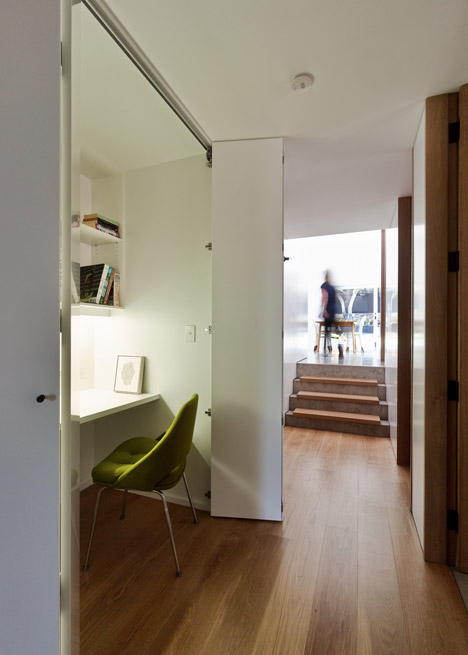
Rather than using large panels of glass to create a connection with the garden, the architects inserted square windows of different sizes that look out towards a jacaranda tree and other aspects of the surrounding plots.
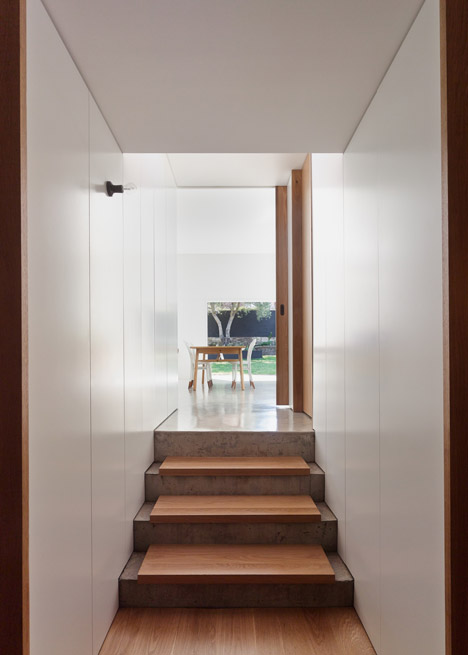
"This creates a 'perforated skin' reading of the extension, undermining its brickiness and achieving a unique and powerful connection with the outside," they said, adding that smaller openings also help to avoid overlooking from the neighbouring buildings.
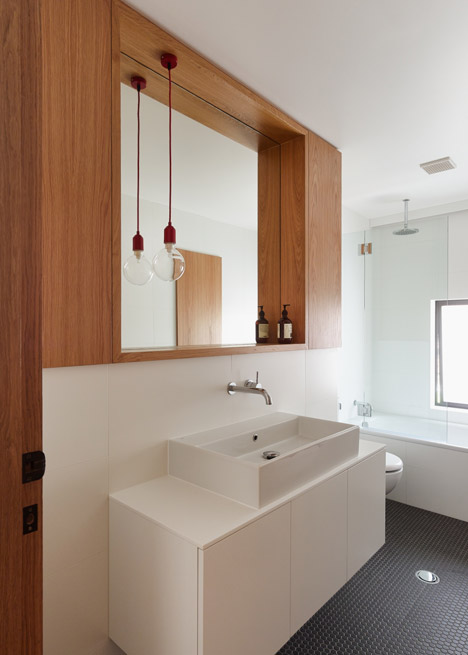
Further windows extend around the edges of the space to provide views to either side, while square roof lights accentuate the natural light that permeates the interior.
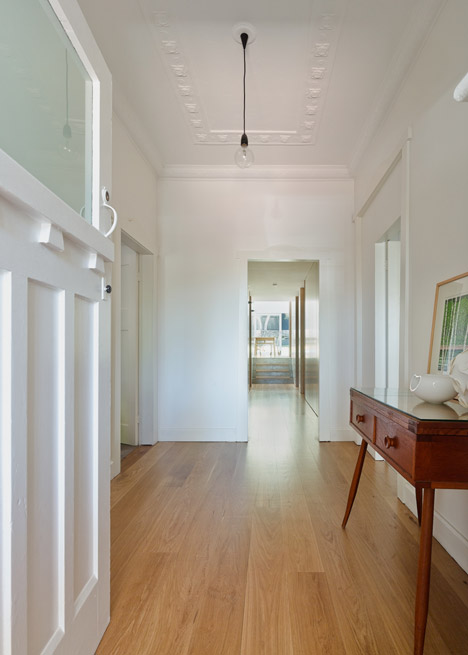
The surfaces inside are whitewashed to brighten the space while retaining the original brickwork texture. Wooden joinery, including a freestanding kitchen island, offers a warm contrast to the white surfaces and raw concrete floor.
Photography is by Peter Bennetts.
